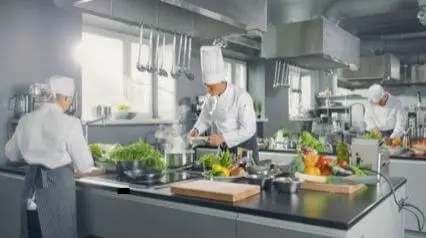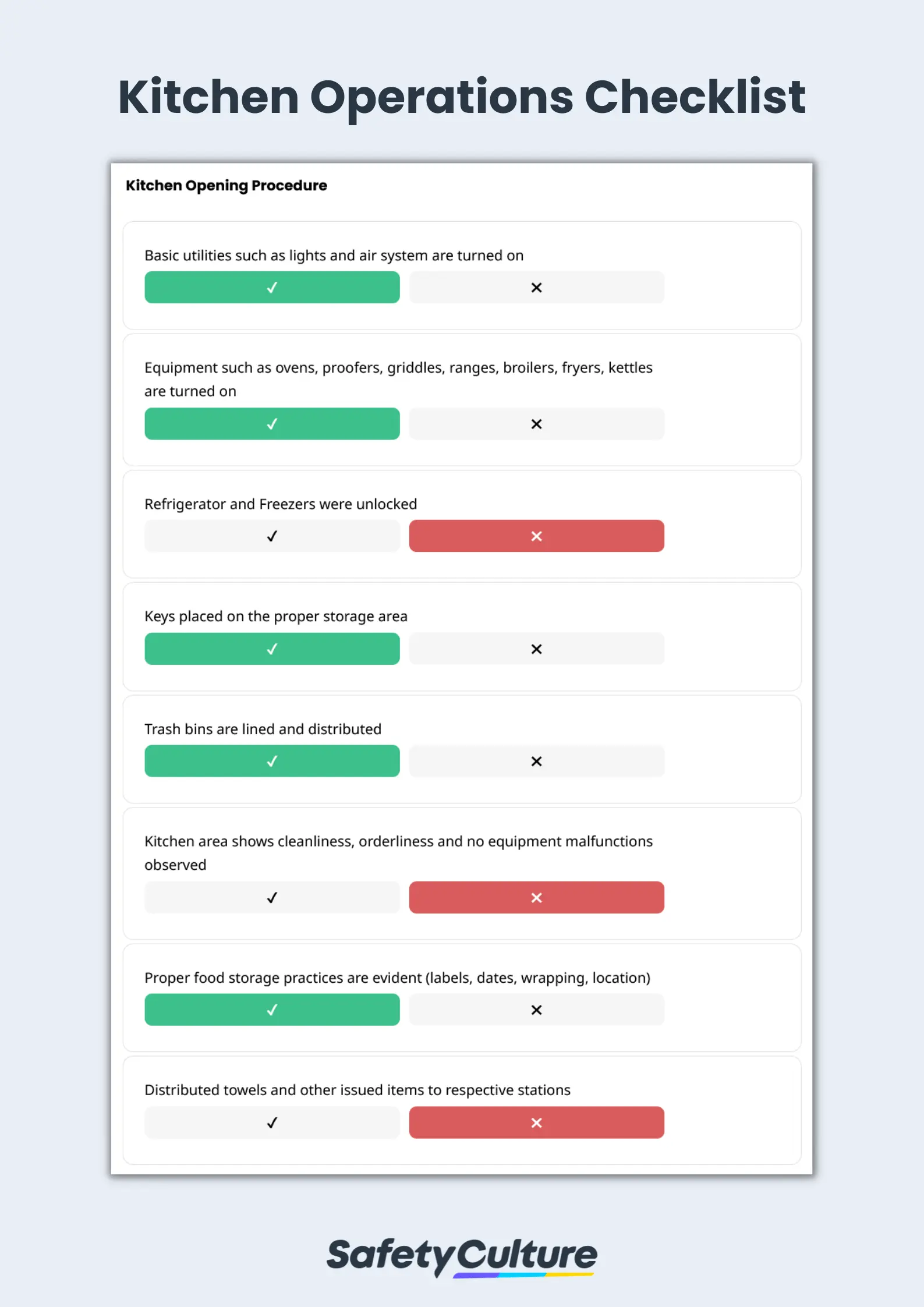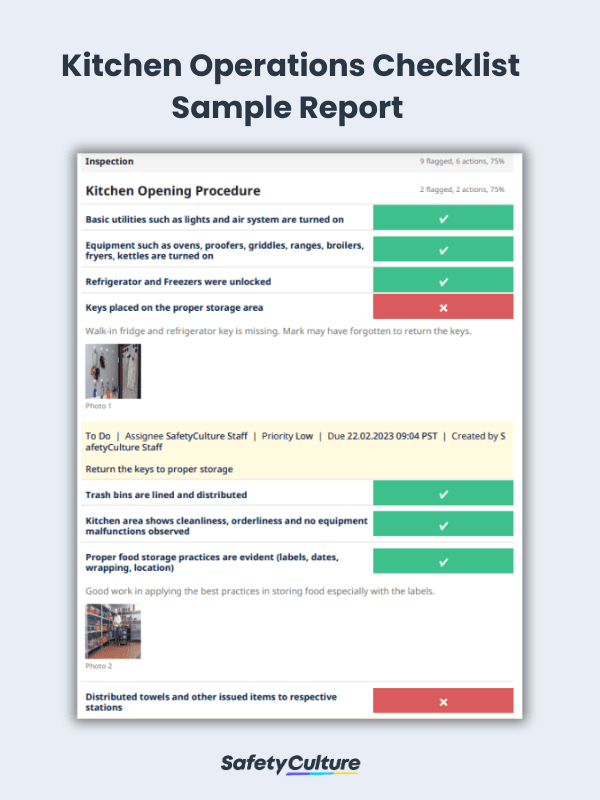What is a Kitchen Operations Checklist?
A kitchen operations checklist is a valuable tool for executive chefs, duty managers, or anyone in the food service or hospitality industry. It is used to ensure that kitchen procedures are strictly followed by the staff and are completed across different shifts. Whether before opening, during service hours, or before closing, a kitchen operations checklist is helpful to any facility that prepares food. Regular kitchen walkthroughs help businesses cut down on expenses, improve food safety and quality, and deliver stellar customer service to their guests. Kitchen operations checklists are essential in preventing untoward incidents in the kitchen that can lead to food contamination and other public health risks.
What are Kitchen Operations?
Kitchen operations is the overall management of the kitchen. It covers areas such as kitchen safety, food quality, safe food handling, kitchen cleaning, staff hygiene, customer service, and inventory. Part of kitchen operations is the supervision of standard operating procedures (SOPs) for preparing menu items as well as for opening and closing the kitchen or restaurant.
Who is Responsible for All of the Kitchen Operations?
The executive chef is responsible for all of the kitchen operations. However, all members of the kitchen staff have a share in that responsibility. In some cases, the executive chef may also have an assistant who acts as the kitchen manager whenever the executive chef is busy with food quality and safety concerns.
What Does a Kitchen Manager Do?
A kitchen manager is tasked with overseeing the four crucial kitchen procedures: kitchen opening, food or kitchen service preparation, kitchen cleaning, and kitchen closing. Kitchen managers are also in charge of ensuring that the staff is following these procedures. Some additional duties may include ordering ingredients, storing food properly, and dividing other tasks among the staff.
Crucial Kitchen Procedures You Should Be Monitoring
Running a commercial kitchen can involve numerous procedures and hundreds of tasks that need to be regularly performed by staff. Knowing where to focus can be daunting. Here are the top 4 procedures you should prioritize to ensure a smooth kitchen operation:
1. Kitchen Opening
The kitchen opening is one of the most crucial procedures as it heavily affects how the other succeeding procedures are performed. Kitchen opening tasks include:
- Turning on basic utilities (e.g., lights, ventilation, etc.)
- Pre-heating kitchen equipment (e.g., ovens, broilers, griddles, etc.)
- Checking and logging temperatures of refrigerator and freezer units
- Inspecting the whole kitchen area to check if closing procedures were properly initiated during the previous shift. (e.g., cleanliness, equipment malfunctions, proper storage, and waste disposal)
- Receiving and proper storage of food supplies (e.g., labeling, indicating dates, proper wrapping, and storage)
2. Food/ Kitchen Service Preparation
Food safety should be a top priority in every kitchen. Focusing on food safety protects consumers from foodborne illnesses and businesses from getting sued or shut down. Restaurants, hotels, and other commercial kitchens should take preventative procedures such as ensuring that kitchen staff adheres to all hygiene and safety procedures. Dishes should also be prepared according to standard recipes and served in a timely and appealing manner.
3. Kitchen Cleaning
Kitchen facilities should be clean and well maintained to pass health department requirements. Keeping a clean environment within the facility promotes food safety and boosts the productivity and efficiency for the kitchen staff. Cleaning should be conducted daily during opening and closing of the kitchen, and even in between shifts. Monitor all items and areas that need to be cleaned using a kitchen cleaning checklist and use it to implement a kitchen cleaning schedule.
4. Kitchen Closing
Similar to the kitchen opening procedure, kitchen closing is also crucial as it involves proper overnight storage of leftover food and ensures the security of the facility before leaving. Overlooking a simple step such as turning off ovens or stoves may lead to fire and other potential risks. Kitchen closing tasks include:
- Double-checking if any perishable foods have been left out
- Checking if all refrigeration equipment are working and locked
- Locking of cabinets and proper storage of keys
- Shutting off all heating equipment and other utilities
- Activation of alarm system
- Locking up the facility
Use a Kitchen Closing Checklist to easily monitor these tasks.
Kitchen Operations Checklist Example
To provide an idea on how a completed opening checklist for kitchen looks looks like, here’s a sample report in a PDF format.




